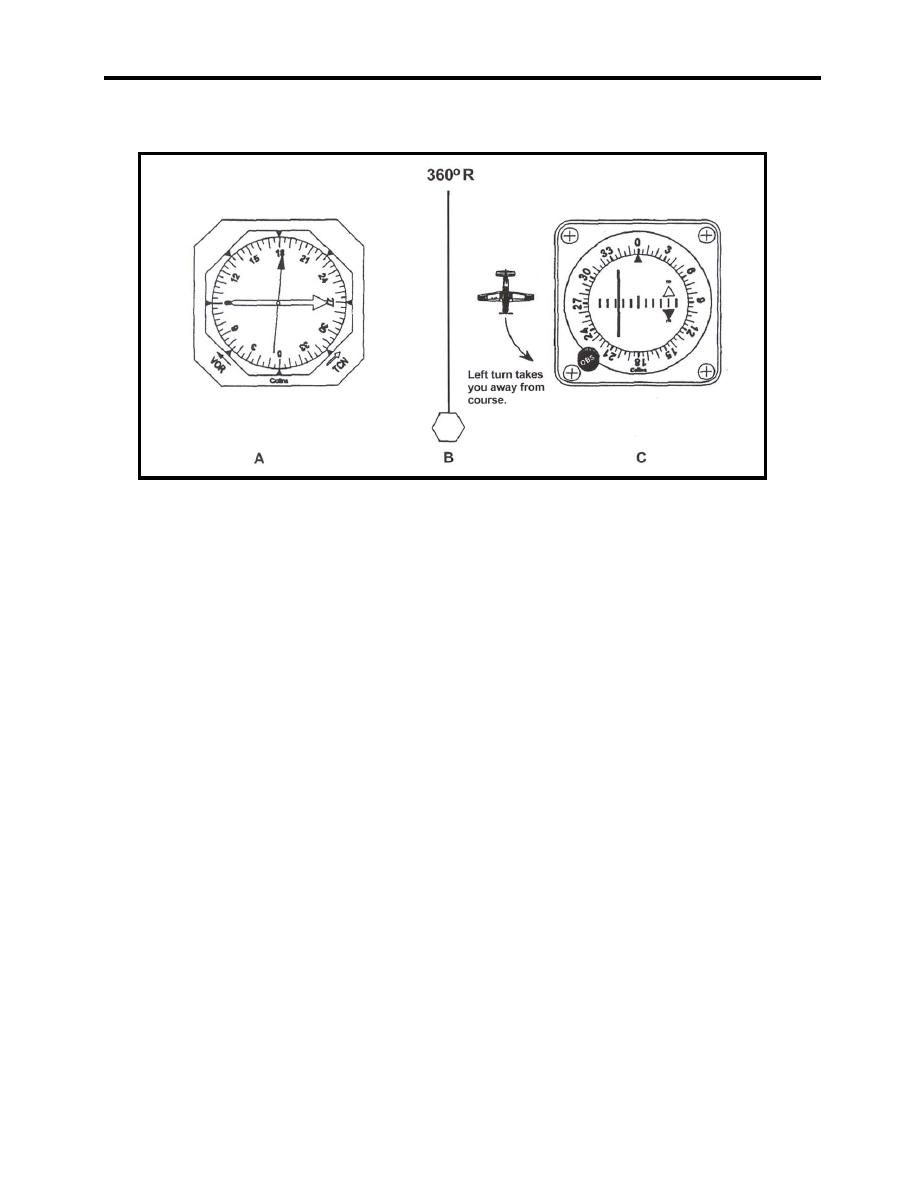 |
|||
|
|
|||
|
|
|||
| ||||||||||
|
|  T-34C INSTRUMENTS
CHAPTER SIX
Again, consider the aircraft drifting off course to the east (Figure 611).
Figure 611 Aircraft Drifting to the East
In Figure 611C, the CDI is displaced to the left of center. This would suggest a left turn to
return to the desired course. However, examination of Figures 611A and 611B indicates a right
turn is necessary.
We can see that we appear to be getting conflicting information. The RMI shows a right turn
necessary to return to course, the CDI indicates a left turn.
This is a condition of the IND350 known as "reverse sensing." Reverse sensing will occur any
time you twist a course with the OBS which lies in the lower half of the RMI, the case illustrated
in Figure 611. In some cases, this may be done deliberately with the intention of immediately
turning to a heading on which the IND350 will provide proper sensing. In most cases, however,
reverse sensing will be the result of setting an improper course (probably 180 off) with the OBS
and attempting to remain on course by reference to the CDI only.
To avoid reverse sensing make it a habit to orient you on the RMI and use the IND350 in its
proper secondary role. Do not use the IND350 to determine the direction of turn.
605.
TRACKING
1.
Amplification Tracking is a procedure used to determine the proper heading to correct
for drift in order to maintain a desired track over the ground. If a crosswind exists, the aircraft
must crab into the wind to maintain a straight path over the ground, thus preventing drift.
RADIO INSTRUMENT FLIGHT PROCEDURES 6-17
|
|
Privacy Statement - Press Release - Copyright Information. - Contact Us |